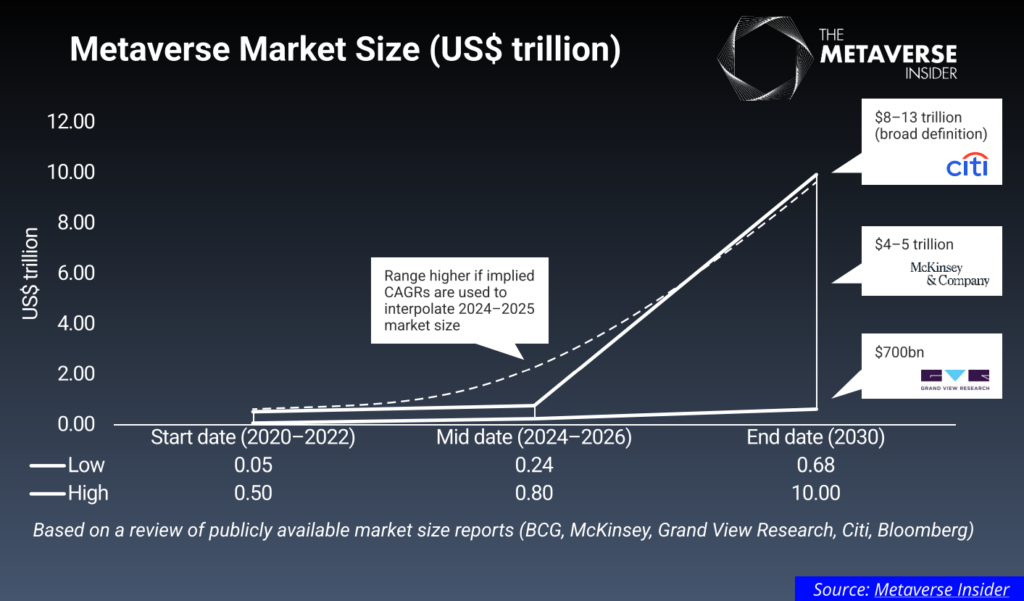The metaverse, a concept now at the forefront of tech innovation, has a rich history that spans several decades. This article explores the evolution of the metaverse, from its early conceptualization in science fiction to the technological advancements that have shaped its current form.
When drawing a timeline of the development of the metaverse, we need to reference our definition of what the metaverse is: “A virtual-reality space in which users can interact with a computer-generated environment and other users.”
According to Britannica, computer-based virtual reality was first invented by Jaron Lanier in 1987. Just two years later, between 1989 and 1991, Tim Berners-Lee invented the Hyper Text Transfer Protocol (HTTP), which gave rise to the World Wibe Web as we know it today after the first browsers outside of NeXTSTEP gained popularity in 1993 with NCSA Mosaic. HTTP hyperlinks would forever shape how users interact with virtual worlds.
The term “metaverse” was first coined by science fiction writer Neal Stephenson in 1992.
In 1993, console and games developer Sega announced Virtual Reality Glasses at the CES.
Meanwhile, in popular culture, William Gibson’s seminal book Neuromancer (1984) and movies such as The Lawnmower Man (1992) and The Matrix (1999) popularized the notion that adventures could be had and fortunes be made in purely virtual worlds.
Philip Rosedale released Second Life in 2003, marking the first all-virtual world, with a virtual economy that succeeded at scale. In 2006, a company called Roblox introduced software that lets users create and share games together online. Palmer Luckey, an 18-year-old inventor, created the prototype for the Oculus Rift VR headset in 2010, and the company got acquired by Facebook for $2 billion in 2014. Then, in 2013, Google started delivering its AR effort Google Glass to selected insiders but was met with public ridicule and pushback (“Glassholes”) and ultimately scrapped the effort in 2015.
The year 2016 saw Nintendo’s release Pokemon Go, which had droves of people swarm through parks in the hopes of finding one or more of the lovely critters hidden in a bush or on a tree. The same year, Microsoft launched its HoloLens platform. A year later, in 2017, Ikea launched the Places app, which lets users view furniture in place using augmented reality.

Fast forward to 2020 when Apple shipped LIDAR sensors with the iPhone 12 Pro, giving augmented reality developers a powerful boost. And finally, in 2021, Facebook rebranded to Meta.
On the decentralized side of the tracks, Bitcoin (BTC) launcheed in 2009, enabling a peer-to-peer electronic cash system. The Sandbox metaverse kicked off in 2011 but didn’t have a token until 2020. 2015 saw the launch of Ethereum and metaverse chain Decentraland.
CryptoKitties, the first hugely popular NFT game, congests the Ethereum blockchain for months in 2017. Sky Mavis launched Axie Infinity in 2018, but the game didn’t take off until the launch of its token in November 2020.
Here is an overview of who the top five players in the metaverse are and which layers they focus on.

Venture Capital has been very active in this space, especially since the Facebook rebrand. McKinsey reports that venture capital (VC), corporate and private equity financing has grown from $13 billion in 2021 to over $120 billion in 2022, including the $69bn acquisition of Activision by Microsoft.

The journey of the metaverse’s development is marked by significant milestones from both tech giants and startups alike. With venture capital funding soaring and major players like Meta leading the charge, the metaverse is poised for continued growth and transformation. This article provides a comprehensive look at the key players and developments shaping this exciting digital frontier.




